Castle Island … a village which has attained the unenviable
notoriety of being considered about the worst in the country1
During the Land War, a reporter for the Illustrated London News stated there were ‘four roads going out of Castle Island, on every one of which a man has been shot within the last four years’.
Michael O’Donohoe’s study of the Land War includes the history of the Land League and its successor, the National League, in Castleisland and surrounding districts for the period 1880 to 1886. A chart entitled INLL Members contains names of members in Castleisland identified from reports of meetings.2
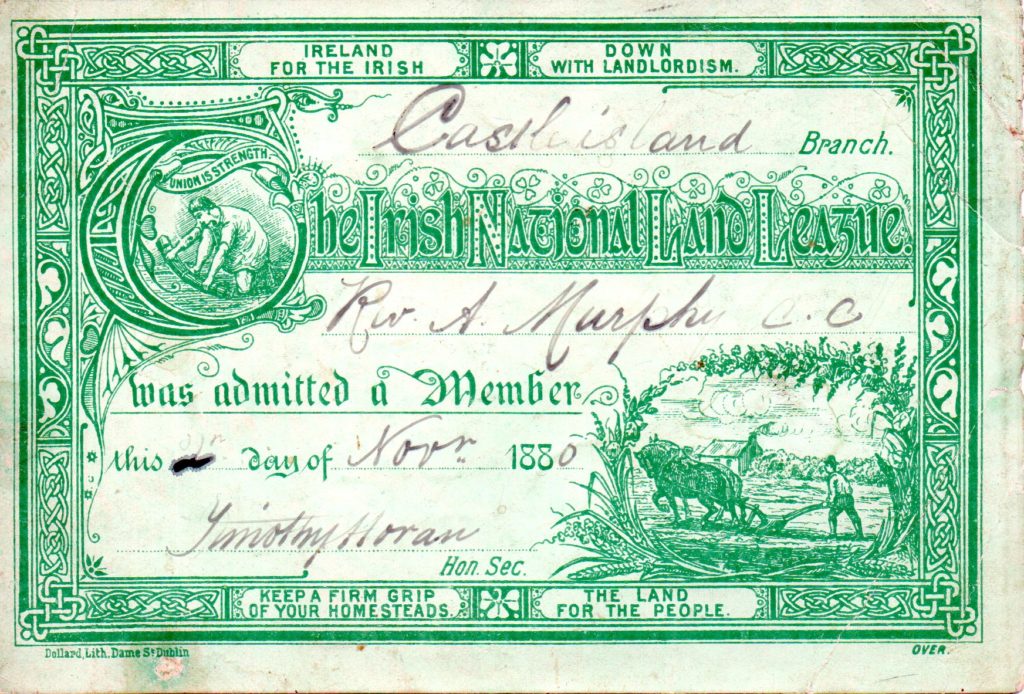
Material includes the Ladies Land League in Castleisland and surrounding districts (Brosna, Knocknagoshel, Castleisland, Coole, Currow and Kilmoyley) for the period 1880 to 1882.3
Michael drew attention to a vivid account of the Land League, Mysteries of Ireland, published anonymously in 1884 which described the League as a response to the scarcity of food that afflicted Ireland early in 1880.4
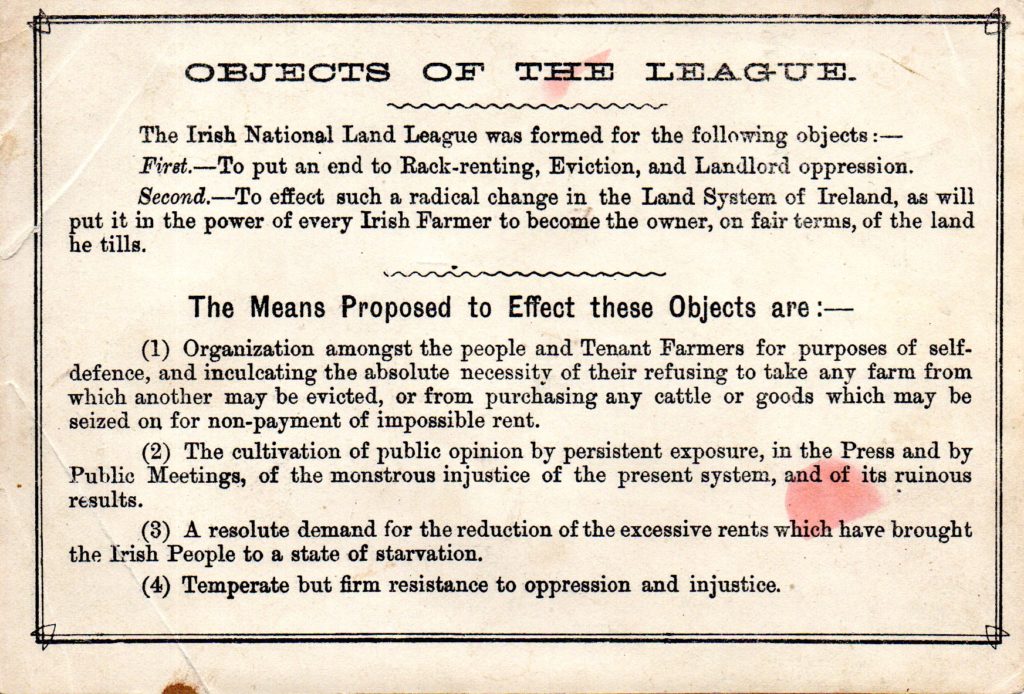
In 1882, a number of people in the Castleisland district were compensated under the Prevention of Crime Act. Their cases illustrate the violence of the period:
Patrick Murphy jnr, Upper Dulague
Several shots were fired on Sunday night through the window of a farm-house occupied by a man named Murphy near Castleisland (December 1880).
Thomas Galvin, Dooneen
Shortly after eight o’clock on Saturday night five disguised men entered the house of Thomas Galvin, a farmer, at Dooneen, near Castleisland, county Kerry. The occupants of the premises at the time were Galvin, his mother, and two female servants. The men were armed with muzzle-loading guns, and had white handkerchiefs across their faces to conceal their features. One of the intruders, a tall fellow, asked Galvin if he had paid his rent. The farmer replied yes, adding that all his neighbours had likewise done so. The tall man, who appeared to be the leader of the party, then coolly asked Galvin whether he would prefer having his ears cut off or be shot. The unfortunate man was then directed to kneel on the floor, and one of the party said Fire. take him about the legs. Five shots were then fired, and three pellets lodged in Galvin’s left thigh. Having fallen on his face, he was beaten with the butt end of a gun, when his terror-stricken mother threw herself upon her son to save him from death. She states that the gun was broken by the heavy blows administered (November 1881).
Michael Flynn, Cordal West
On Wednesday night a party of men entered the house of a farmer named Michael Flynn, a tenant on Lord Ventry’s estate near Castleisland. They fired several shots at Flynn, completely fracturing his right thigh (December 1881).
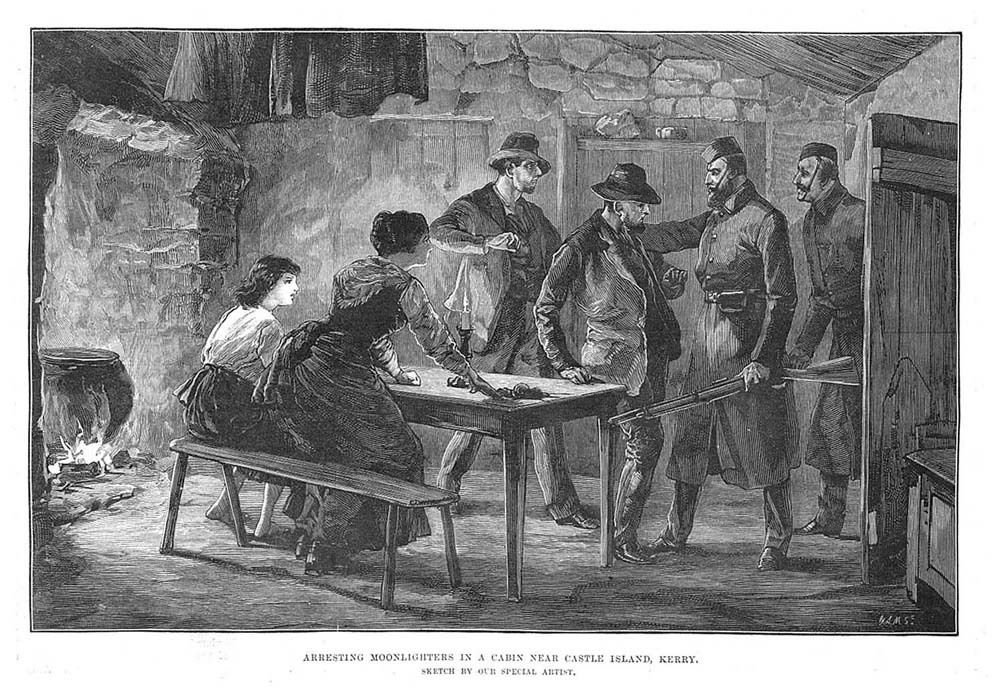
Daniel Dowling, Greganoonia
On Tuesday morning at Castleisland, county Kerry, a man named Dooling (sic), tenant of Mr John Blennerhassett, was called up at one o’clock and asked why he paid his rent. He replied that his neighbours paid. He was ordered to bend his head, when a man fired, lodging the shot in his thigh (March 1882).
Cornelius Leary, Reenasup
A man named Cornelius Leary, residing at a place between Castleisland and Rathmore, was on Tuesday night brought out of his house by a party of men and shot in both legs. The cause alleged is that his son-in-law was recently evicted from the farm, and Leary went as caretaker (March 1882).
.
Kate Hickey, Crinny (for her father Cornelius)
A farmer named Cornelius Hickey was returning about six o’clock on Thursday night to his home which is situated about two miles from Castleisland, when he was shot and seriously injured, having received two bullet wounds in the right leg. Hickey had had some legal proceedings about a piece of land (June 1882). Cornelius Hickey, a caretaker who was shot in the legs at Crinny near Castleisland on the 8th ult, died in Castleisland Infirmary last night, after having had one of his legs amputated (July 1882).
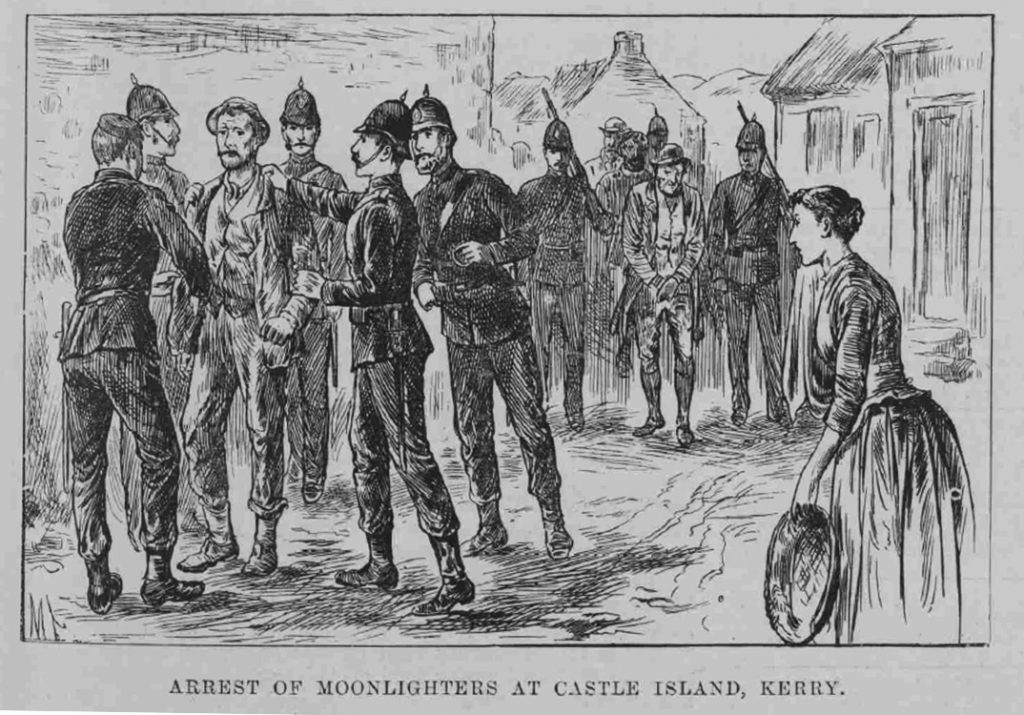
James Kearney, Kilmurry
Intelligence has reached here this evening from Castleisland that an outrage was committed this morning about eleven o’clock. It appears that a man named James Kearney, who acts as caretaker for Mr George Raymond at a place called Kilmurry, a few miles from Castleisland, was proceeding to Castleisland to market when he was fired at and wounded in the back (July 1882).
.
Johanna Leahy, Scarteen (husband Daniel Leahy murdered)
A horrible murder was committed at one o’clock this morning at Scarteen, near Killarney, of a most respectable farmer named Daniel Leahy, bailiff on the Kenmare estate. He was dragged from his bed by a party of disguised men, who fired several shots, killing him on the spot. The cause assigned for the murder of Daniel Leahy is that he had taken a meadow from which the tenant had been evicted (August 1882).
.
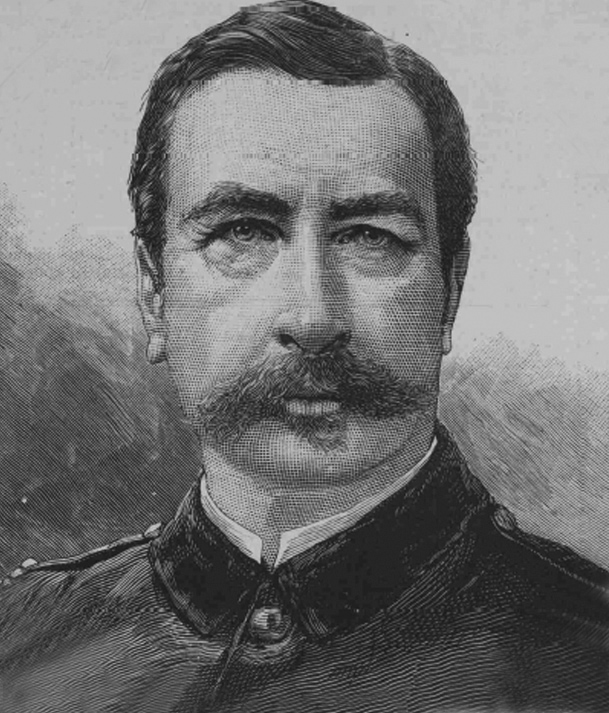
John Culloty lost a limb
John Culloty of Goulane, Carker, Scartaglen, near Castleisland lost a leg during an attack on him in April 1882.5
Culloty and Flynn are small farmers near Castle Island, a small town in southern Kerry, and the centre of a district in which the criminal societies have been allowed to manage their business so well in independent co-operation with the Land League and its successor, the National League, that it has acquired a notoriety which, however congenial to the majority, has been obtained at the expense of the lives and limbs of the unfortunate minority.6
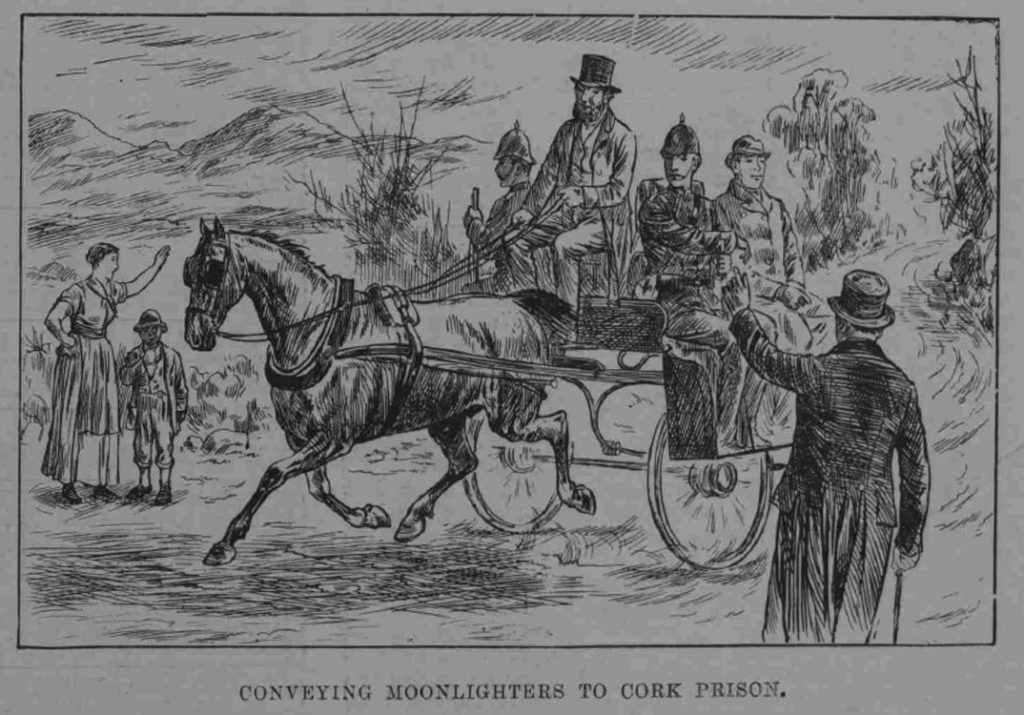
Another of those compensated in 1882 was Mrs Wilhelmina Herbert, Cahermore, Roscarbery for the murder of her son, Arthur Edward Herbert of Killeentierna, near Castleisland, a magistrate shot near his home.7
John O’Connell Curtin of Molahiffe also lost his life. The White-Headed Boy (1898) by George Bartram (otherwise Henry Atton) is a thinly disguised account of O’Connell Curtin’s murder.
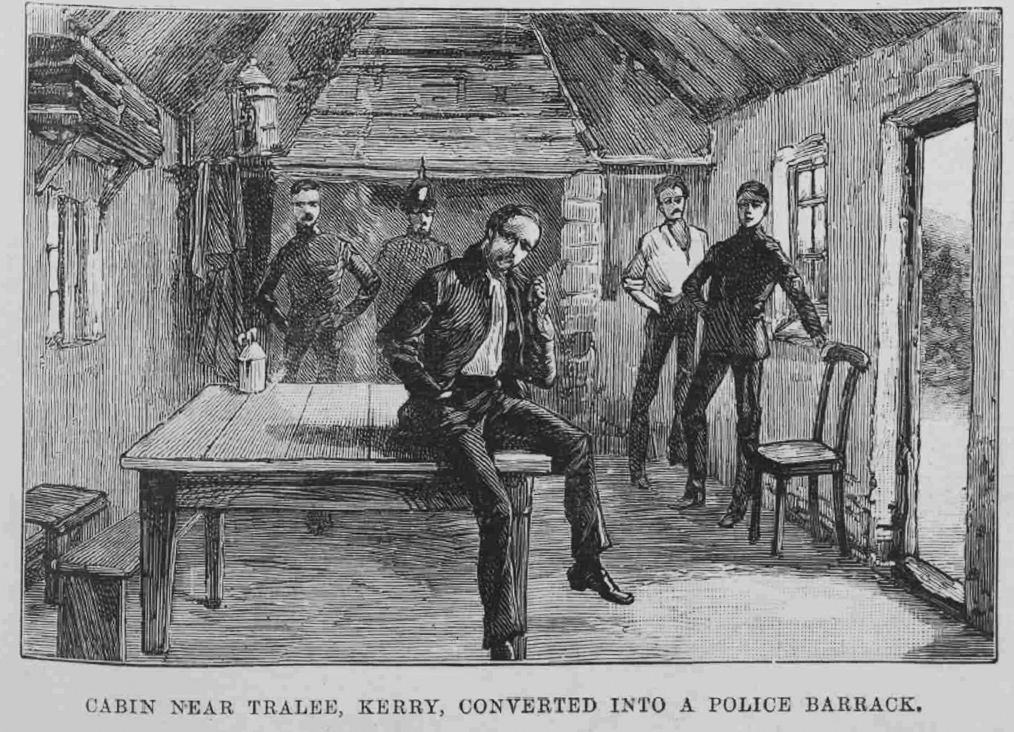
Ladies Land League
The Ladies Land League, led by Anna and Fanny Parnell, appears to have been initiated in Kerry by Misses Minnie, Nellie and Mary O’Carroll of Brosna. Branches were later formed at Knocknagoshel, Castleisland, Coole, Currow and Kilmoyley.
In 1880, the Misses O’Carroll received the following support from Fanny Parnell in America:
The women’s Land League, formed here six weeks ago, has been amazingly successful, and branches of it are spreading like wildfire all over America. I trust that after you have established your League, it may have a similar success. If the government imprisons all the members of the men’s Land league, then let the womens’ Land League come to the front and carry on the battle … You, ladies, can employ with tremendous effect the weapon of social ostracism which is used in the Irish Land League. Shun as if they were criminals all men and women who buy crops or stocks that have been seized for non-payment of rent … at the same time set your faces steadily against murders and outrages of all kinds. Every time a landlord or an agent or a farmer who grabs land from his neighbour is shot in Ireland, it hurts the Land League, diminishes its influence and diminishes the sympathy felt in America for Ireland (Kerry Sentinel, 17 December 1880).
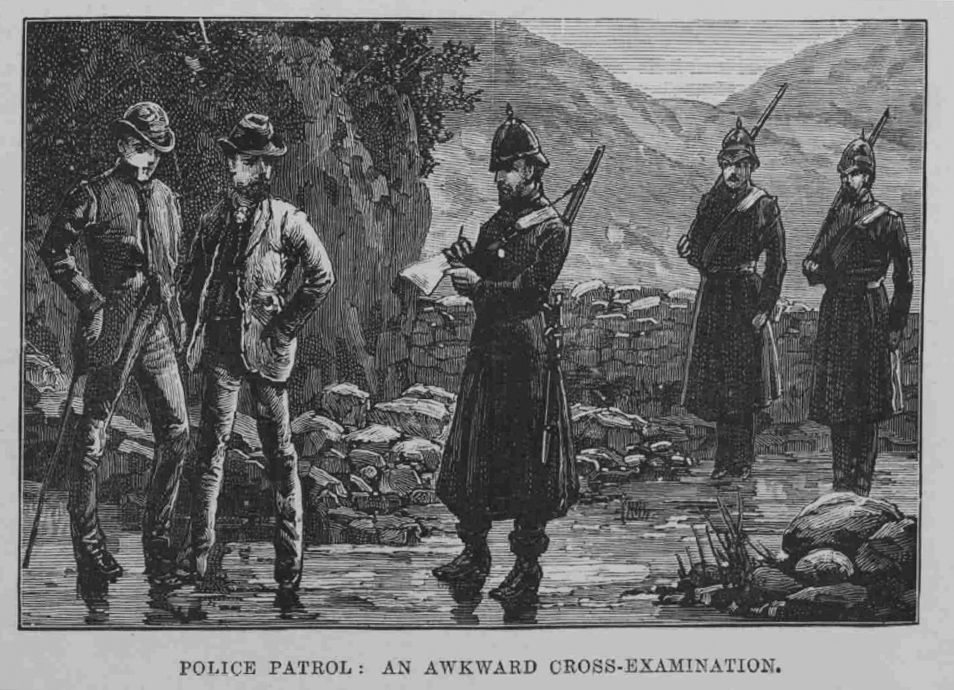
Norah Moriarty, published by Kerry author Miss Rowan in 1886, was described as ‘a chronicle of every phase of the Land League Movement from 1879 to 1885’.8
_________________________________________
1 Illustrated London News, 6 November 1886. The passage in full: 'The arrest of a party of malefactors at Castle Island, ten or twelve miles from Tralee, recalls the name of a village which has, during the last few years, attained the unenviable notoriety of being considered about the worst in the country. The evil repute into which Castle Island has fallen may be partly attributed to the fact that Brady and Curley, who were executed for the Phoenix Park murders, were employed there not long before in the rebuilding of a house and may have propagated their pernicious doctrines. It was almost immediately after a visit from Mr P J Sheridan in the disguise of a priest that the outrages began. There are four roads going out of Castle Island, on every one of which a man has been shot within the last four years. 2 IE MOD/41/41.1/41.1.1. Information organised into columns by surname (in alphabetical order) and an indication of duration of involvement in columns headed 1880, 1881, 1884, 1885 and 1886. Inaugural meeting of the Castleisland branch was October 10 1880. 3 IE MOD/41/41.5/41.5.1-41.5.2. 4 Mysteries of Ireland, Giving a Graphic and Faithful Account of Irish Secret Societies, & Their Plots, From the Rebellion of 1798, to the Year 1883 (1884), Ch XIII, pp133-144. A copy of this book, which contextualises the period of 1880-1883 by sketching the political movements in Ireland from the late eighteenth century to that of the 1880s land agitation (on which period it enlarges and includes the murders in Phoenix Park of Lord Frederick Cavendish and Thomas Burke) together with a note on its structure and speculation on its author, is held in the collection (IE MOD/A7). 5 Notes on John Culloty in IE MOD/55. 6 'Boycotting in Ireland, Sketches in County Kerry', The Graphic, 1 May 1886. The dwellings of John Culloty, Mike Flynn and others were illustrated on a map of Castleisland from 'the position of Mike Flynn's house' (ibid). Pencil sketches of Culloty and Flynn were printed in the same report. Culloty was also sketched by Sydney P Hall during the Parnell Commission, see The Graphic, 24 November 1888. 7 Further reference, IE MOD/35. 8 Norah Moriarty: or, Revelations of Modern Irish Life published in two volumes in 1886 by Miss Anne Margaret Rowan (1832-1913) author of Memories of Old Tralee. Other material in the collection relating to the Moonlighters includes Michael O'Donohoe's essay 'The Moonlighters' (IE MOD/26/26.2) and notes, 'Moonlighters' (IE MOD/55/55.1/55.1.207). A nine-pg account, 'The Land War and the Moonlighters' held in IE/A20 (2 No 19) outlines the organisation: 'The Moonlighters were a distinct organisation that was set up in the year 1879. They had no small involvement with the Land War and they undoubtedly had great influence on the life of the people, especially on the life of the small farmers. The fiercest fighting about land matters was in the district around Castleisland'. The account concludes, 'It was in 1926 eventually that the Irish at last got lawful possession of their own lands'.


